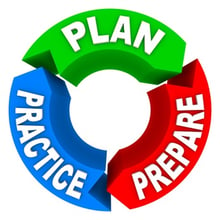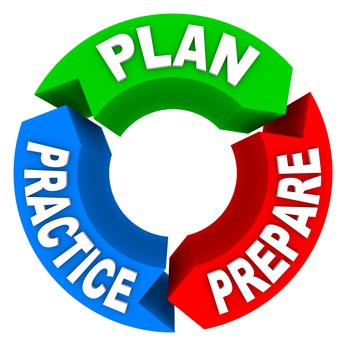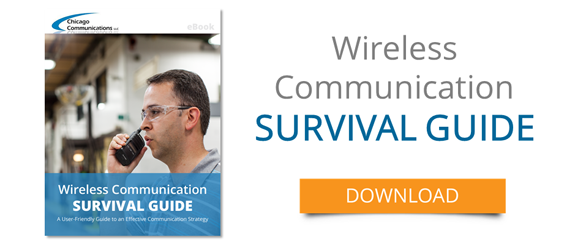When public safety agencies respond to an emergency, they are able to arrive at the scene of the event and deal with the emergency in mere moments. They are able to effectively communicate with their own team, different departments, the media, and even the general public, all without causing any delays or issues. When you stop to think about it, it seems like an incredibly daunting task to accomplish all of that in such a short period of time.
For them, it all starts with having an effective, comprehensive emergency communications strategy in place. This strategy typically includes  everything from the types of equipment they will use in the dispatch center and in the field, the 10-codes they will rely on, and general best practices and procedures that they will follow.
everything from the types of equipment they will use in the dispatch center and in the field, the 10-codes they will rely on, and general best practices and procedures that they will follow.
Creating and using these communication strategies is just part of the job for those in public safety, but it isn’t always as top-of-mind for those working in other industries. For example, if you own a hotel or are part of the IT admin team at a school, or if you lead the night crew at a warehouse, chances are you aren’t always thinking of how you will communicate during an emergency.
Who is going to be responsible for what? How will you communicate with authorities or 9-1-1? How will you ensure your staff/students/guests/patients are safe?
These are all things you should consider regardless of your industry, and the good news is that you may already have some pieces in place (more on that later). While your emergency communication plan may not be as elaborate as those in public safety, it can still make a difference. Here are the two main areas to focus on when building your strategy:
Equipment
Just like every carpenter needs the proper tools to complete the job, your team needs the proper wireless communication equipment to stay connected, informed, and safe. Fortunately, there is a good chance that your staff is already leveraging digital two-way radios for internal communication (if not, you can read why you should, here).
In many cases, your two-way radios are either already equipped with, or able to be equipped with, emergency applications and capabilities. For example, many devices offer Push-to-Talk (PTT) technology, which allows the radio user to connect with 9-1-1 or another team member at the touch of a button (no waiting around for them to answer a phone call). Another example is a Man-Down application that notifies your team if you were to become incapacitated on the job, as can happen especially in manufacturing.
There are three main categories of wireless equipment that you should look into:
1) Two-Way Radios
2) Bi-Directional Amplifiers
3) Wireless Networks
Once you have your equipment in place, the next step is to determine what the roles will be on your team during an emergency, and what your goals are.
Roles and Goals
This step is incredibly important. Here, you need to decide who is going to be responsible for what. This will vary depending on your industry and organization, but some common examples include determining which faculty member will check the classrooms during a fire drill, or which floor manager will make the “all clear” call when an evacuation is in order.
Once you know who is going to be responsible for what, make sure you clearly state all of your goals in regards to an emergency. For example, how fast do you want your guests out of your hotel? What path will they take? Where will you all meet?
When you have equipment in place and roles established, you can fine tune your strategy with a few of these emergency communication best practices.
Best Practices
1) Be Brief - in many cases, being able to accurately explain the situation to a 9-1-1 dispatcher can make a world of difference. However, emergencies tend to move quickly, so whoever gets in touch with public safety needs to be informative yet brief during their call. Be sure to answer the dispatcher’s questions and provide clear, accurate information.
2) Repeat Yourself - When speaking with 9-1-1 or a public safety official, repeating back what they say not only informs them that you heard and understand, but it helps you process and retain the information better. This is important because, as mentioned before, emergencies tend to move quick - that’s what makes them emergencies. And, during those short periods of time, there is a lot going on, so anything you can do to help yourself stay focused is key.
3) Understand the Technology - Depending on your equipment, you may be able to communicate with a large group of radio users or with a single user (Group VS 1-to-1). If you are trying to communicate with your entire staff or a specific group, you don’t want to accidentally just speak to one person (the opposite is true here, too). Understand your technology and be prepared to use it.
When an emergency occurs, having an effective strategy in place can mean the difference between life and death, so it should always be taken seriously. To get all of the equipment and insights you need to create a comprehensive strategy, contact Chicago Communications today.



